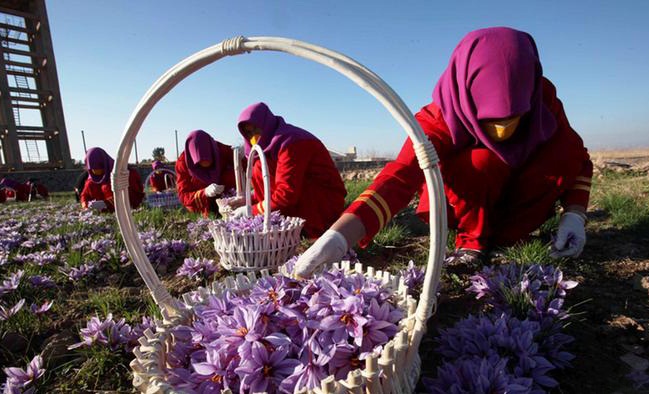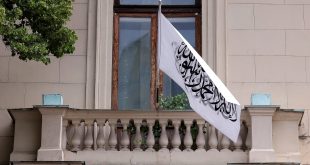AT News
KABUL: Saffron is considered as one of the world’s most expensive spices as it is largely cultivated and harvested by hands requiring a vast amount of labor for its harvesting and on-farm processing. Saffron stigma and corm are used in cooking for color and delicate flavoring, perfume and medicines. In recent years, saffron production has become as one of the most important sources of income for small and medium scale Afghan farmers and traders. As estimated, in 2019, the farmers and traders earned over USD 27 million from saffron production and export.
There is a high demand for saffron within Afghanistan, however the market elsewhere is much greater such as China, India, UAE, Europe and the USA. Due to its light weight and high value per kilogram, it can easily and economically be transported from villages to towns and by air to these destinations. Saffron production therefore is considered as an important activity for the economic growth of the country. Recently Afghan saffron was ranked first in the world for its quality and Afghanistan was ranked as the third-largest producer of saffron in the world. Although there is significant growth in saffron production across the country, its production is still very low compared to the global market demand.
Herat is one of Afghanistan’s major provinces for the production of saffron because of its climatic conditions favorable for saffron production. FAO through its USAID-funded project “Promote the Value Chain – West (PVCW)” is working with the local traders to build their capacity to produce, process and package hygienic and quality saffron meeting global quality standards; equip them with the standard machineries, assist them in getting ISO certificates, and connect them with the global market by supporting them to attend global exhibitions.
PVCW is also a project employing and empowering women. Mahtab Saffron in Enjil district of Herat is one of the companies employing only women as its workers in saffron production and processing. The company employs around 30-40 women at a time. FAO supported this company with the capacity building training on hygienic saffron processing and packaging, and provided the required machineries for standard drying and packaging of saffron. FAO also assisted the company in acquiring International Organization for Standardization (ISO) 22000 certificate, a certificate ensuring quality, safety, and efficiency of products, services and system to export the products outside the country. The company believes that its production capacity has increased to 40% thanks to FAO’s technical and equipment support.
Tayeba Abasi, 23, is the head of the processing unit at Mahtab Saffron. She is working with this company since 2018. “The working environment is very good for women and saffron production has become a great source of income for our women workers. Previously, we used to do hard works to earn money, however after joining this company and with the provision of high-quality machinery from FAO, work has become much easier for us. Women in this company earn around AFN 8000 per month (about USD 100) and this income largely supports our livelihoods”, said Tayeba Abasi with a smile in her face.
With support from FAO, work in the company is highly
standardized. Obtaining
the ISO certificate was a major milestone that has enabled the company to increase
its export four times higher than its usual range. The company is now able to
export its product to foreign markets and the main customers so far have been
from China, Saudi Arabia, the USA, and the United Kingdom. Meanwhile, other
saffron production companies have reached out to Mahtab Saffron to get guidance
on getting the ISO certificate.
Obtaining the ISO certificate is one of the most important parts of the business. The traders and business owners can get this global certificate if they meet all the criteria. Once it’s acquired, export of the products outside the country becomes much easier.
 Afghanistan Times
Afghanistan Times




